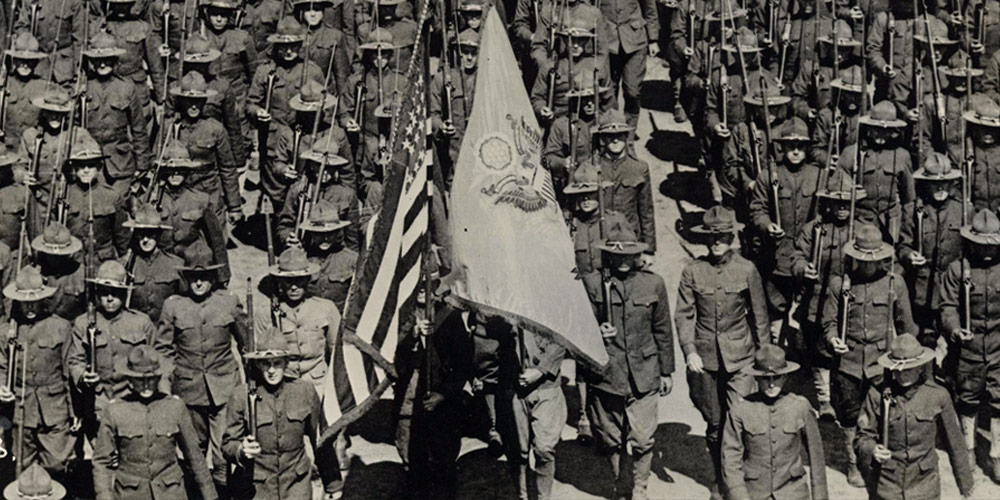What Was a Doughboy?
Published: 3 May 2022
By Mary McMahon
via the wisegeek.com web site

Doughboys_marching
Historical accounts show that U.S. infantry (foot) soldiers had been called “Doughboys” as early as the Mexican-American War (1846-48), but the actual origin of the term remains a matter of speculation. During World War I, the term was universally adopted as the nickname for all American troops who went overseas to fight.
The slang term “doughboy” was used to refer to American infantry soldiers through the First World War, although the term fell out of popularity after that point. Despite the rumor that Europeans coined the term because Americans were “slow to rise” to join the First World War, infantry soldiers were also called doughboys during the Mexican American War, from 1846-1847, and it is likely that the term because widespread during that period. Like slang terms in many languages, the origins of the word are rather murky, and there are a number of competing theories to explain how the doughboy came to be.
Before examining the theories for the origins of the term, it is important to look at how it was used. Initially, members of the mounted cavalry used “doughboy” as a derogatory term for members of the infantry, who were generally looked down upon by other members of the armed forces. Infantry kits and supplies were also referred to using the moniker “doughboy,” to distinguish them from cavalry supplies, which were often of higher quality. By World War One, however, the doughboys had adopted the term for themselves, and were using it in letters home and to describe themselves. Official military dispatches and publications also began to refer to members of the infantry as doughboys, and Europeans used the word as a blanket term for all American soldiers, or Yanks.
The most likely explanation for the origins of “doughboy” is tied in with the Mexican American War. During long marches, the infantry would stir up large amounts of dust and dirt, closing the day looking like clay figures. Their dirty faces and uniforms resembled the adobe structures used throughout the American Southwest, and it is possible that the cavalry teased the infantry by calling them “adobe boys,” and that the term was corrupted into “doughboy”.
The term may also be related to baked goods. The mounded buttons on infantry uniforms resembled the small pastries known as doughboys, and it is also probable that a number of young bakers apprentices sought their fortunes in the war. Some theorists have also suggested that many infantry meals included doughy breads baked in camp fires, although this theory is not very plausible, since the whole army presumably ate the same food. However, since the infantry moved at a slower rate than the cavalry, it is possible that their bread tended to be more doughy, since it did not have time to cook properly, and this is a possible explanation for the doughboy title.
Read the entire article on the wisegeek web site here:
External Web Site Notice: This page contains information directly presented from an external source. The terms and conditions of this page may not be the same as those of this website. Click here to read the full disclaimer notice for external web sites. Thank you.



